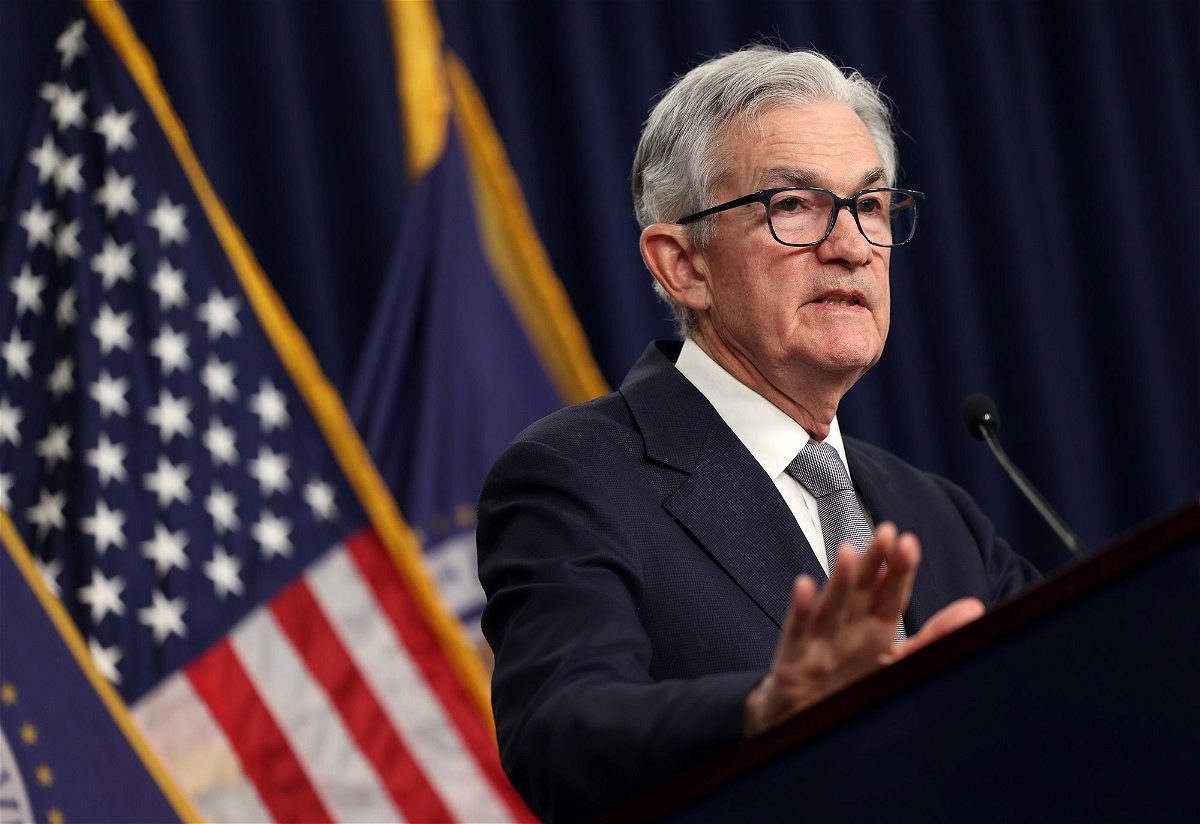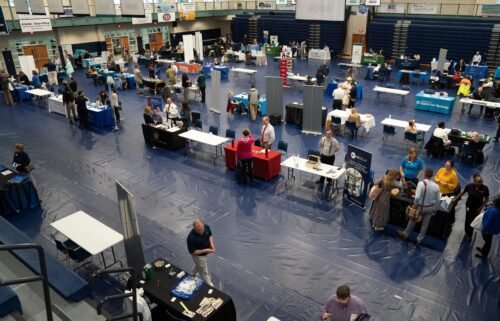Fed Chair Powell: Too early to say when to expect rate cuts

Federal Reserve Chair Jerome Powell on November 1.
Washington, DC (CNN) — Investors have mostly concluded that the Federal Reserve is done hiking interest rates, and are already looking toward rate cuts next year, possibly as early as in the first half of 2024.
Fed Chair Jerome Powell says: Not so fast.
“Having come so far so quickly, the [Fed] is moving forward carefully, as the risks of under- and over-tightening are becoming more balanced,” Powell said Friday in opening remarks before a moderated discussion at Spelman College in Atlanta.
“It would be premature to conclude with confidence that we have achieved a sufficiently restrictive stance, or to speculate on when policy might ease,” he said.
Powell’s comments come less than two weeks ahead of the central bank’s upcoming policy meeting, on December 12-13. The Fed is widely expected to hold interest rates steady at a 22-year high for the third consecutive meeting.
While Powell and other officials say they’re not even thinking about cutting rates just yet, some investors expect cuts to begin around the middle of next year.
For a frozen US housing market struggling with dwindling sales and record low affordability, loosening monetary policy bodes well for lower mortgage rates. The Fed does not directly set mortgage rates, but its actions influence them.
Mortgage rates track the yield on the 10-year US Treasury note, which moves in anticipation of monetary policy moves, what the Fed ends up doing and investors’ reactions. With Treasury yields sliding in recent weeks, so have mortgage rates, and rate cuts next year would help that along.
Still, Powell and other Fed officials are apparently keeping one more hike on the table in case inflation proves to be more stubborn than anticipated — but that possibility is not reflected in futures. It’s unclear how, or even if, the Fed will acknowledge an end to rate hikes in this cycle.
So far, central bank officials are breathing more easily after the latest reading of the Fed’s preferred inflation gauge showed that price hikes eased in October, after picking up earlier in the year due to rising energy costs, which have cooled markedly recently.
In this year’s seven Fed meetings so far, the Fed has hiked rates four times and held them steady three times. December’s Fed meeting will likely bring that to an even split for this year.
Stocks rose following Powell’s comments.
Inflation, spending and mortgages
Consumer spending and inflation both eased in October, the Commerce Department reported Thursday. The core measure of the Personal Consumption Expenditures price index, which strips out volatile food and energy prices and is the Fed’s favorite inflation measure, rose 3.5% in October from a year earlier, down from September’s 3.7% rise.
Meanwhile, the headline measure including all prices rose 3% during the same period, its weakest pace since March 2021.
Consumer spending, which accounts for about two thirds of economic output, rose 0.2% in October from the prior month, down from September’s 0.7% increase.
Holiday spending so far has been robust, with Black Friday and Cyber Monday sales setting records. The Fed generally wants to see a slowing economy, since that is how rate hikes are meant to cool inflation. Economists are widely expecting the economy to ease from its red-hot pace of growth in the third quarter.
But for the tens of millions of homeowners in America, what’s going on in the housing market hits close to home, since housing costs make up a big chunk of people’s monthly budget.
The 30-year fixed-rate mortgage fell to an average of 7.22% in the week ending November 30, down from 7.29% in the prior week, Freddie Mac reported Thursday. A year ago, the average 30-year fixed-rate was 6.49%. Home affordability remains in doldrums, but that is expected to improve next year.
During his discussion, Powell emphasized the central bank’s current strategy of balancing the risk of inflation stalling, or picking up, against the risk of the Fed inadvertently inflicting unnecessary economic damage. But he said much uncertainty remains.
“There wasn’t any experience with year three of the pandemic recovery the last time we had a pandemic, it’s just unique,” Powell said. “Policy is at a restrictive level, meaning it’s holding the economy back; inflation is still running well above target, but it’s moving in the right direction, so we think the right thing to be doing now is to be moving carefully.”
Powell also declared that “the public’s expectations of future inflation remain well anchored.” Most consumer surveys show that Americans still believe inflation will eventually normalize in the long run, except the University of Michigan’s.
The university’s latest consumer survey showed that long-run inflation expectations rose in November to their highest level since 2011.
What Fed officials are saying
Fed officials have broadly acknowledged that economic conditions are setting the stage for inflation to continue its descent. That includes a slower economy and “restrictive” interest rates.
“All in all, it seems like output growth is moderating as I had hoped it would, supporting continued progress on inflation,” Fed Governor Christopher Waller said earlier this week at an event in Washington.
New York Fed President John Williams said Thursday that he expects inflation to fall slightly above 2% next year.
“We’ve gotten to a restrictive stance and things are moving in the right direction,” he told reporters. “Now we can assess whether we need to do more.”
Still, the New York Fed chief said “additional policy firming may be needed” in case inflation’s slowdown stalls, or even reignites.
While some Fed officials have expressed optimism, others remain unconvinced that the Fed’s job is done.
Fed Governor Michelle Bowman said Tuesday at an event in Salt Lake City that she expects “we will need to increase the federal funds rate further to keep policy sufficiently restrictive to bring inflation down to our 2% target in a timely way.”
Chair Powell is also set to participate in a discussion later Friday at Spelman with Fed Governor Lisa Cook “to hear from local leaders in the tech innovation and entrepreneurship community,” according to a statement.
The-CNN-Wire
™ & © 2023 Cable News Network, Inc., a Warner Bros. Discovery Company. All rights reserved.



